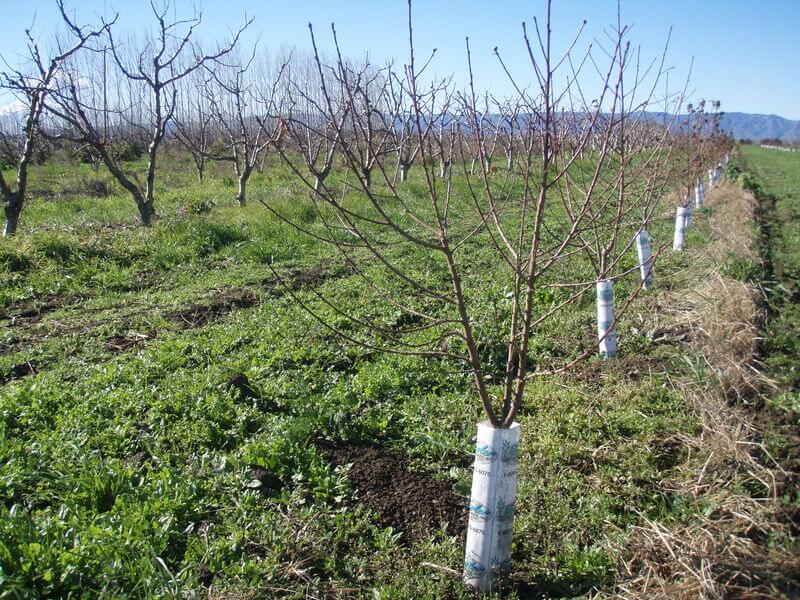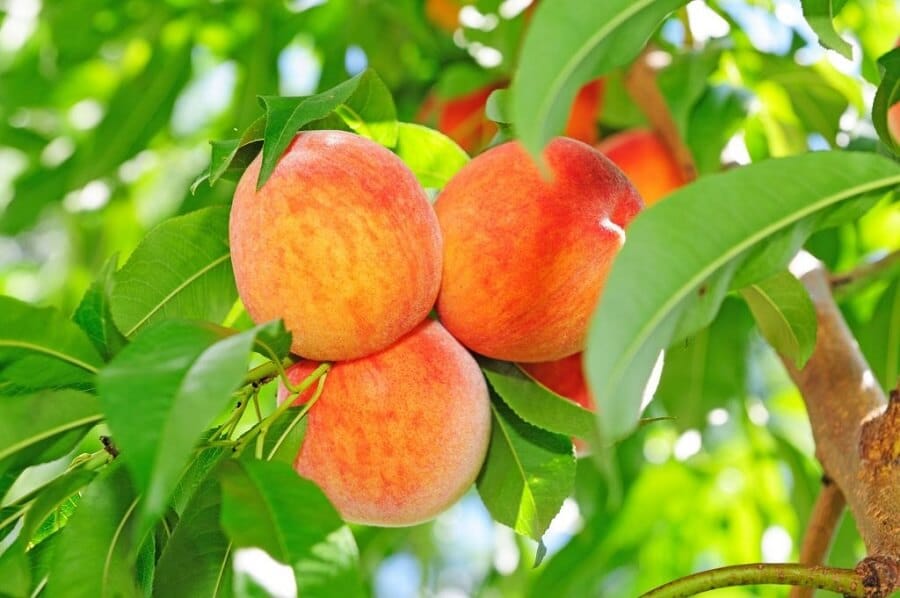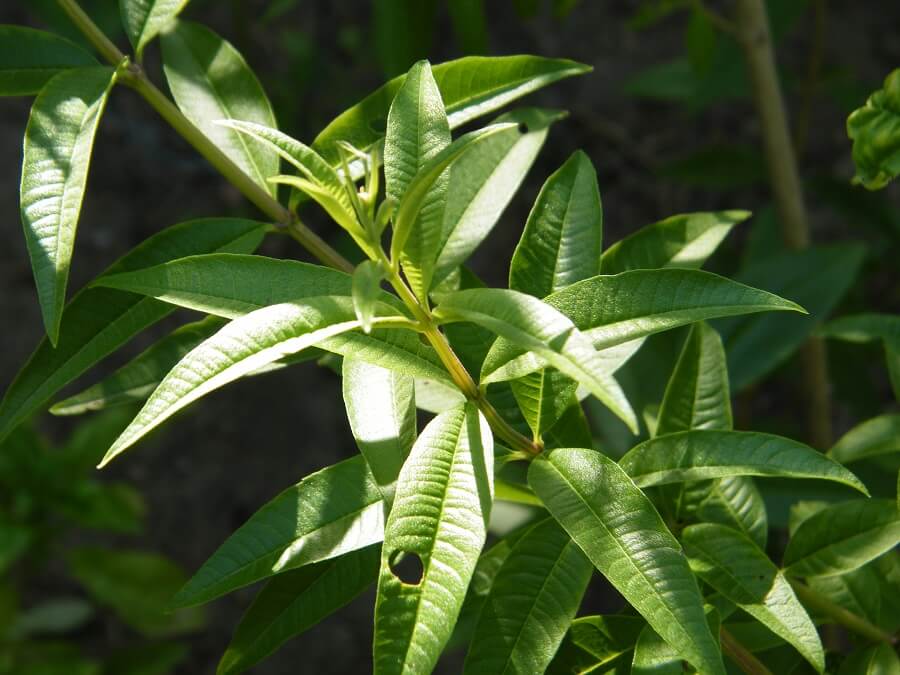How to Prune a Peach Tree: 6-Step Guide
Step 1: Understand Why You Should Prune Your Peach Tree
Before showing you the actual steps of pruning a peach tree, we thought it would be interesting to tell you a bit about what makes pruning so special. First of all, it helps the tree produce new growths. In turn, this also means more fruit. So, if you think pruning might be counterintuitive, you should know it actually leads to a bigger yield. Second of all, peach trees need plenty of sunlight. If the branches grow too close together, they won’t all get the sun exposure they need. Pruning them will allow you to open them all to the sun. Not to mention the fact that you should never allow dead branches to impede the others’ growth. Cutting them off helps new ones develop. Finally, some people choose to spray their peach tree with pesticides. If you’re thinking of doing the same, pruning is once again relevant. The pesticide will reach all branches equally if the tree is properly pruned.Step 2: Choose the Best Time to Prune
The first thing you need to know about how to prune a peach tree is the best time to do so. The ideal time is in early spring, after the last major cold front of the winter. The weather shouldn’t be too cold when you prune, because this might make the tree less resistant to the cold and less likely to yield a lot of fruit. You can prune the tree in February as well, but it all depends on the kind of weather you get where you live. If you know late February doesn’t mean the end of extremely low temperatures, you should wait some more. Something else you should know about how to prune a peach tree is that young trees and old ones require different pruning techniques. Not only that, but they should also be pruned at different times. Start with the old ones first. This will give the young ones time to produce new growths. You also shouldn’t prune the trees while they’re blooming or immediately after they’ve bloomed. As a general rule, it’s perfectly fine if you prune them a bit late rather than too early.Step 3: Acquire the Necessary Tools
Luckily, there aren’t many tools that you need for the job of pruning a peach tree. For the smaller branches, which you can manage more easily, you need a pair of pruning shears. For larger branches, a pruning saw or a pair of loopers will do the trick. If you’re interested, you should know that after you prune the branches, you can cover them with a wound dressing. This does not really have much effect in keeping fungal growth at a distance though, so it’s not really necessary.Step 4: Prune Just the Right Amount
Another important rule when learning how to prune a peach tree is not to prune too much of it. In this respect, there’s a really interesting rule called the “cat tossing” rule that you should follow. The rule created by Dr. Lee Reich, author of “Landscaping with Fruits”, says that you should stop pruning your peach tree when you can safely toss a cat through each of the branches without it touching any of them. Although this may be a strange visual, it actually helps you visualize your work pretty vividly. In terms of the height of a peach tree, 9 feet is perfect for a mature one. You should prune the tree quite low, since this will encourage it to grow branches outward, not upward. Moreover, don’t be afraid to remove 90% of the fruits that are already developing. This won’t rob your tree of a successful yield. On the contrary, it will help it grow more and healthier peaches, but not more than it can carry, which could happen if you don’t prune it properly. You have to remove most of it to give the tree a head start.Step 5: Prune the Old Trees
Since we’ve already established you should prune the older peach trees first, it’s time to take a look at the actual steps you have to take. The first thing that should concern you is removing unhealthy or dead growths. Just to be on the safe side, you should keep an eye on your mature trees at all times and remove unwanted growths whenever you notice them. Be on the lookout for branches that are infected by fungus, dead branches, dried fruit, water shoots that grow on top branches, and shoots that grow near the tree’s roots. Once you’ve eliminated all the undesired and diseased growths on your peach tree, it’s time to provide it with a proper shape. This is one of the most important steps of today’s guide on how to prune a peach tree, since it’s responsible for the growth pattern of the tree and how many peaches it will yield. A maximum of 6 branches that you shape as desired is enough for a healthy tree. The rest of them should go. Keep in mind the fact that all the branches have to be cut at a 45-degree angle. If you notice branches that grow horizontally or vertically, remove them. If you don’t, they will break once the peaches grow. The best pattern for shaping a peach tree is a “V” one, so make sure every branch sticks to that rule. As we’ve already mentioned, you should prune the tree in such a way so as not to block sunlight. This means eliminating branches that grow over each other. You should aim for an open vase shape, where the center of the tree is completely clear. If there are branches with new growths on them that you can’t properly reach, you should cut those off as well. Otherwise, you’ll struggle to pick the fruit. Another important rule when it comes to pruning old peach trees is cutting the branches very close to the base. You should cut them all at the same angle, but one that isn’t too steep. If you have a branch that exceeds 1 inch in diameter, create three cuts. The first one should be in the middle of the branch and from the underside. The other one must be an inch down from the top of the branch. Finally, the last one should be next to the branch’s collar.
Another important rule when it comes to pruning old peach trees is cutting the branches very close to the base. You should cut them all at the same angle, but one that isn’t too steep. If you have a branch that exceeds 1 inch in diameter, create three cuts. The first one should be in the middle of the branch and from the underside. The other one must be an inch down from the top of the branch. Finally, the last one should be next to the branch’s collar.
Step 6: Prune the Young Trees
When it comes to learning how to prune a peach tree, you’ll always have to pay more attention to the young ones than to the old ones. In fact, in order to make sure they develop properly, you should prune them at planting. That is if you plant them in spring. If you decide to plant them in the fall, wait until the next spring to do the pruning. The first thing you should know is that the lowest branch of the tree should be 15 inches above the ground. The branches shouldn’t be tall either, and they should grow at an angle of 45 degrees. In the summer, you have to pay attention to scaffold limbs. These are the branches that grow the largest and begin at the trunk. Choose about 3 of them and allow them to grow in a radial pattern, facing different directions. They will be perfect for housing smaller branches once the tree develops. The last thing you should take care of when pruning young trees is something universally applicable to peach trees, which is cutting the branches off close to the trunk. This will prevent the branches from decaying. You should only make thinning cuts (those that start at the branch’s origin) and refrain from making heading cuts. Yong trees won’t benefit from this. In fact, it might cause unwanted water shoots or suckers at the top of the tree.
If you want to buy a peach tree that you can transplant in your garden, you can find one here. If you’re interested in seeds, here‘s where you can buy some.
The last thing you should take care of when pruning young trees is something universally applicable to peach trees, which is cutting the branches off close to the trunk. This will prevent the branches from decaying. You should only make thinning cuts (those that start at the branch’s origin) and refrain from making heading cuts. Yong trees won’t benefit from this. In fact, it might cause unwanted water shoots or suckers at the top of the tree.
If you want to buy a peach tree that you can transplant in your garden, you can find one here. If you’re interested in seeds, here‘s where you can buy some.
Can I Use the Same Steps to Prune a Lemon Tree?
Pruning a lemon tree requires a specific set of steps. To ensure optimal growth and fruit production, follow the growing lemon tree step by step. From selecting the right tools to making precise cuts, understanding the process is vital. By adhering to the correct methods, you can maintain a healthy and flourishing lemon tree.
What are the Similarities and Differences Between Pruning a Japanese Maple and Pruning a Peach Tree?
When it comes to pruning, both a Japanese maple and a peach tree require careful attention. However, the essential steps for pruning Japanese maple trees differ from those for peach trees. Understanding these distinctions is crucial to ensure the health and appearance of each tree species. Pruning japanese maple: essential steps involve focusing on preserving the tree’s elegant form and removing dead or weak branches. On the other hand, pruning a peach tree aims to maintain its shape, promote fruit production, and remove damaged or overcrowded branches.










Hi, in Step 5 you write: “If you have a branch that exceeds 1 inch in diameter, create three cuts. The first one should be in the middle of the branch and from the underside. The other one must be an inch down from the top of the branch…” I don’t quite get it. Can you explain in another way?
Cheers